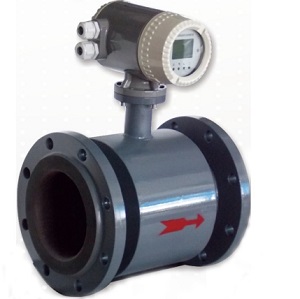
Considerations for choosing a magnetic flow meter
Photo from silverinstruments
To choose the perfect flow meter for your requirements, you need to focus on your individual application details rather than on the specifications that are given by the flow meter manufacture. Due to their cost-effectiveness, longevity, and high accuracy, electromagnetic flowmeters are often the first choice of many people. Even then, there are certain points to consider while choosing a flow meter.
Your Budget
The allocated budget is a determining factor in this case. Usually, high accuracy devices cost more.
The magnetic flowmeter, however, is a high accuracy device that comes at a reasonable price. Typically you can get an accuracy rate of about 0.25% to 0.5% of flow rate and the time to get the return on your investment (ROI) is generally 6 months or less.
These mag meters are versatile and suitable for a broad range of municipal and industrial processes. Also, device maintenance is minimal as there are no moving parts. The only requirement is the cleaning of the electrodes as per the flow meter manufacturer’s instructions and that too depends on the process fluid or water quality. The usual service life expectancy is 30 years.
The cost of the flow instrumentation installation and the subsequent maintenance must be considered when comparing costs. This cost must then be amortized over the device lifetime.
Your Application Requirements
Next comes understanding and reviewing the requirements of your application. This includes the fluid used, the temperature of the fluid, the range of flow, and its operation pressure. Electromagnetic flow meters function only with conductive liquids. So compressible fluids i.e, gases are not suitable for this meter.
The type of magnetic flowmeter suitable for your application also depends on whether you are measuring drinking or wastewater, the kind of electrode material used and the liner or coating material of the tube’s inner surface.
Other than knowing the kind of process media being measured, other factors like its temperature and operating pressure are also important. An full bore electromagnetic flow meter used for a 150 psi application might not function for a 300 psi one. Usually, the instruction sheet that comes with the flow meters specifies the working pressure and temperature for the fluid media being used. Adherence to these specifications will let you get accurate measurements.
Fluid Characteristics
The properties of the fluid that you need to measure determines the kind of flow meter that you require. For using a magmeter flow meter, the process liquid must be conductive in nature., otherwise it will not work.
Line Size
The cost of the flow instrumentation depends largely on the line size. You need to have sufficient room for installation. Usually, full bore magnetic flow meters require a minimum upstream and downstream straight run distance for the flow to be accurately measured. Flow disturbers like any valves for modulation, injection points for chemicals, etc. need to be considered as well before flow rate measurement.
Fluid Being Measured
The properties of the process fluid is an important consideration. Whether the fluid is corrosive or not or whether it is clean or wastewater will impact the decision greatly, especially when choosing the lining material. Liners are usually made of materials like neoprene, hard rubber, Tefzel, Teflon, and ceramic. These liners, however, run the risk of delamination. That is why an electromagnetic flowmeter with a liner that is fusion bonded is considered the best choice.
